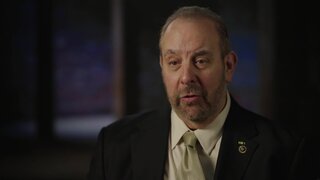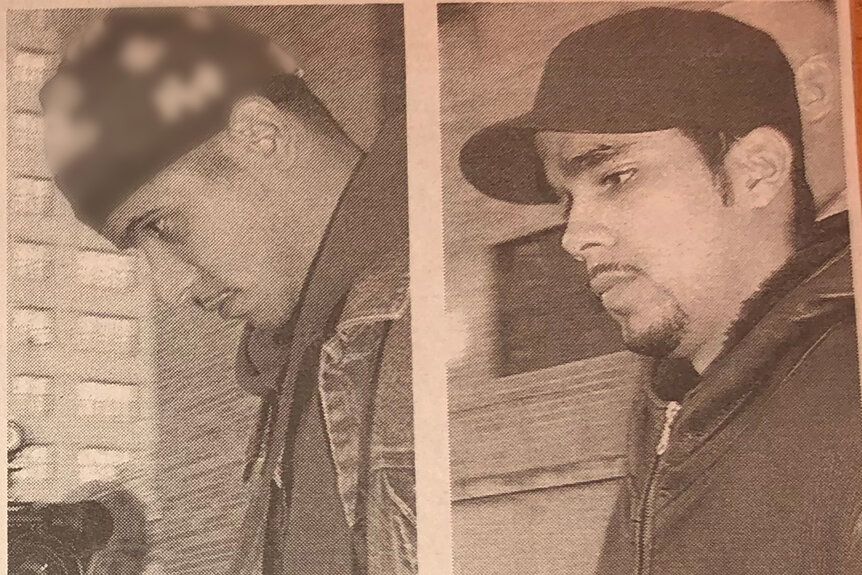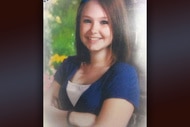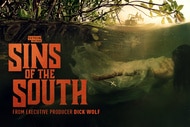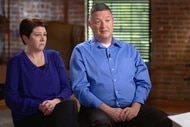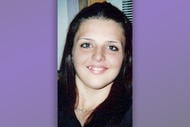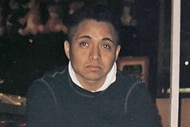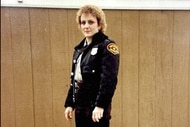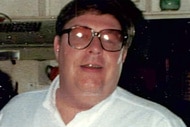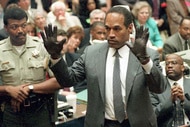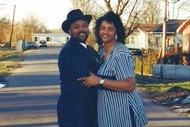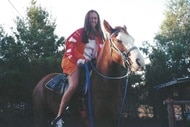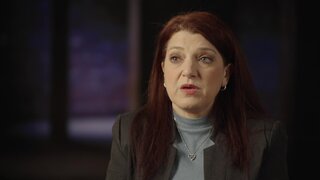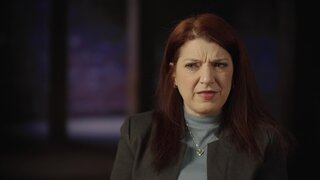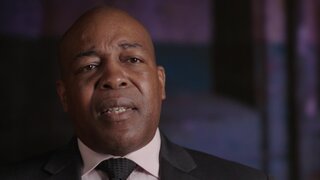Create a free profile to get unlimited access to exclusive videos, breaking news, sweepstakes, and more!
Detectives Search For Who Stabbed Beloved Spanish Harlem Role Model More Than 50 Times
N.Y.P.D. investigators had to devise a plot to have two suspects arrive at separate parole appointments concurrently to find who brutally murdered Jason Adams.
Friends and long-time neighbors in New York’s close-knit Spanish Harlem revered Jason Adams as a man who proudly served his community and went out of his way to help others. So, when Adams was found brutally murdered in bed, N.Y.P.D. detectives had to devise a plot to nail two people wanted for his murder.
On the morning of October 16, 1998, police were called to Adams’ 106th Street home after receiving a 9-1-1 call from the 34-year-old man’s friend. The caller said he tried calling Adams to no avail, prompting him to visit the apartment and throw pennies at the window, assuming Adams was still asleep. After slipping into the apartment, the friend found Adams dead in his bedroom, according to now-retired N.Y.P.D. Detective Scott Wagner of East Harlem’s 23rd Precinct.
“Jason was found partially nude, face-down on his bed,” Wagner told New York Homicide, airing Saturdays at 9/8c on Oxygen. “It was a very bloody scene.”
According to Wagner and now-retired Manhattan Assistant District Attorney Steven Nuzzi, the victim sustained over 50 stab wounds, all of which were on the backside of the body, including the head, back, arms, and legs.
RELATED: How NYC Man’s 1990 Murder Became State’s First Anti-Gay Hate Crime Conviction
“It was a passionate thing,” said Wagner. “There was overkill.”
Investigators were perplexed by a lack of physical evidence, such as blood trails, D.N.A., and fingerprints, though Adams’ television and other electronics had been taken from the apartment. The home’s locks were also undisturbed, leading detectives to theorize that Adams knew his killer or killers.
Who was Jason Adams?
Adams grew up in the projects of East Harlem. According to Adams’ friend, Felix Laborda, though the area had a reputation for drug dealing and other crimes, Adams steered far away from trouble.
“He was such a good man,” Laborda said of Adams. “He was the helping hand.”
After moving to 106th Street as an adult, Adams found employment as a building maintenance porter for Manna House, a center offering workshops for youth and the performing arts. There, his duties included sweeping and mopping, as well as taking out the trash.
Just two weeks before his death, Adams told a local television station that working as part of the community was a “privilege” to “help enhance” the area. He also enjoyed “associating with some nice people” who’d gone through the program, per an archived video obtained by New York Homicide.
“People in the neighborhood are pretty decent people; it’s just that some of them might be misguided and misdirected,” Adams stated. “Some of them [have] given up to their surroundings and figured they can’t do any better. But you gotta keep pushing. You can’t give up, you can’t give in.”
According to friend Christian Lozada, Adams also worked at a candy store around the corner.
“He was like a Mister Rogers,” said Lozada. “But a real-life Mister Rogers.”
“Everyone loved him,” Laborda echoed.
Physical Evidence Found at the Crime Scene
Adams’ shocking murder shook residents who soon found themselves scared and mistrusting of those in their community, according to Laborda. Meanwhile, N.Y.P.D. investigators failed to glean much from multiple neighborhood canvasses, prompting them to return to the crime scene and look for more physical evidence.
A more in-depth search of Adams’ residence produced stacks of photographs.
“They were scattered throughout the apartment,” Det. Wagner told New York Homicide. “We ended up recovering two garbage bags full of personal snapshots.”
RELATED: Detectives Search for Fake Doctor Suspected of Killing Missing Manhattan Banker
Friends and family helped investigators identify the people in the photos, but two men remained unaccounted for.
Police also found the blood-spattered business card of a parole officer in the Bronx, which perplexed detectives since Adams was “saint-like” and had no criminal history, according to Wagner. Cops visited the officer, who claimed he had no idea who Adams was.
Still, there were no strong leads in the homicide investigation until 11 days later.
An Unexpected Tipster Comes Forward
Detective Wagner and his partner were near the entrance of Adams’ building when a man — well-known to police as a “notorious cop fighter” — turned the corner and approached them.
“He’s coming to talk to us,” Wagner told New York Homicide. “We look at each other. It’s weird, but we’re gonna listen.”
The witness told detectives that he’d known the victim since childhood and previously saw him with two “bad” men. The witness knew one man as “Richie,” who previously worked at a local Foot Locker store, but wasn’t sure of the second man’s identity. The three previously served time together at the Oneida Correctional Facility in upstate New York.
The witness matched the two men as the two unknowns from Adams’ photographs.
Detectives went to the Foot Locker, where workers I.D.’d the suspect as Richie Rivera, “a career criminal” who’d been fired from the shoe store, according to Wagner. Rivera was on parole for robbery, though his Manhattan parole officer didn’t match the one police had visited in the Bronx. After questioning corrections officers from the upstate prison, detectives learned the second unknown man in Adams’ photos was Ralph Marrero.
Marrero’s parole officer was the man whose business card police found at Adams’ apartment.
A Plot to Match Parole Appointments
Police were able to identify the suspects six days before Marrero's next scheduled appointment with his parole officer, with Rivera’s following just one day later. Detectives contacted Rivera’s P.O. and explained the situation, getting him to reschedule Rivera’s appointment so it was concurrent with Marrero’s in the Bronx.
Det. Wagner called it a “one-shot deal” to nab each suspect, and on November 4, 1998, they found Rivera asking his P.O. for a pass to visit his mother in Connecticut. Not wanting to tip him off that he was a suspect, investigators asked if he knew Jason Adams, to which Rivera said he was a friend.
“He said that he had no knowledge of it,” according to Wagner. “But he was willing to help us in any way he could.”
As for Marrero, he failed to meet his parole officer in the Bronx, where plain-clothes officers waited. However, police found him at his last-known address with a packed duffle bag near the door, as though Marrero was about to leave.
Police didn’t have the “concrete evidence” to arrest either man and hoped to glean more by questioning each suspect separately. As they had with Rivera, police hoped not to tip Marrero off and asked if he could come into the precinct to discuss his friend’s homicide.
Rivera was the first to talk.
“He never implicated himself but said he knew a guy who might have something to do with it,” Wagner told New York Homicide. “He said the guy’s name was Ralph.”
What Happened on the Night of the Murder
Confronting Marrero with Rivera’s statements, Marrero told detectives that Rivera came to him with an idea to score some money. Both men befriended Adams — who was gay — and hung out with him on multiple occasions, including when they helped Adams pick up a computer in the Bronx and on trips to Central Park.
“Basically, they were courting him,” said Det. Wagner. “They were making him comfortable.”
On the night of the murder, Marrero and Rivera went to Adams’ apartment “on the ruse that they would have sex with Jason,” according to Wagner.
Marrero was adamant with detectives that he was not gay but claimed it was a plot to rob the victim. The three men drank wine before they had the victim lay naked on the bed. In the bathroom, the suspects left their clothes and put socks on their hands (to avoid leaving fingerprints) before going into the room and attacking Adams.
RELATED: Maitre D's Slaying on New York City’s “Restaurant Row” Helps Solve Cold Case Murder
Marrero said he held Adams down while Rivera “went wild” and repeatedly stabbed Adams.
A.D.A. Nuzzi told New York Homicide the most “chilling” part of the murder: Adams kept pleading “Why?” to his killers before lowering his head in prayer.
After killing Adams, Marrero and Rivera showered off the blood, packed Adams’ electronics into several garbage bags, and left. They reportedly disposed of bloody towels and the murder weapon in a sewer, though police could not recover the items. However, investigators did find Adams’ stolen belongings at the home of Rivera’s girlfriend.
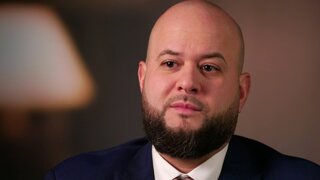
“We asked Ralph, ‘Why did Jason have your parole officer’s card?’ And Ralph told us, ‘Because I wanted to use Jason as a character reference ‘cause Jason was gonna help me get a job,’” said Det. Wagner.
Rivera eventually confessed though he said Marrero also stabbed Adams. Ultimately, both were charged with first- and second-degree murder during the course of a robbery.
Trial and Conviction
Since Marrero and Rivera gave contradicting statements regarding who stabbed Adams, both were tried separately. Rivera was tried first, though he revised his confession and pleaded not guilty to the charges. Despite this, his recorded confession was allowed in as evidence.
“The video statement showed a really heartless killing with absolutely no evidence of remorse at all,” A.D.A. Nuzzi told New York Homicide.
Adams’ friend, Felix Laborda, said he was “disgusted” by what he’d heard.
“He trusted the wrong people,” Laborda said of Adams. “That’s where he went wrong.”
Christian Lozada called the suspects in his friend’s murder “evil,” especially compared to Adams, who seemed “sent from God.”
Rivera was found guilty on all charges and sentenced to life behind bars without the possibility of parole. Later, Marrero pleaded guilty to charges of second-degree murder and was sentenced to 15 years to life.
“That damage is done; they killed a childhood role model of East Harlem, where I’m from,” said Laborda. “I will never be relieved. I just carry that weight.”
Watch all-new episodes of New York Homicide as Season 2 continues Saturdays at 9/8c on Oxygen.



